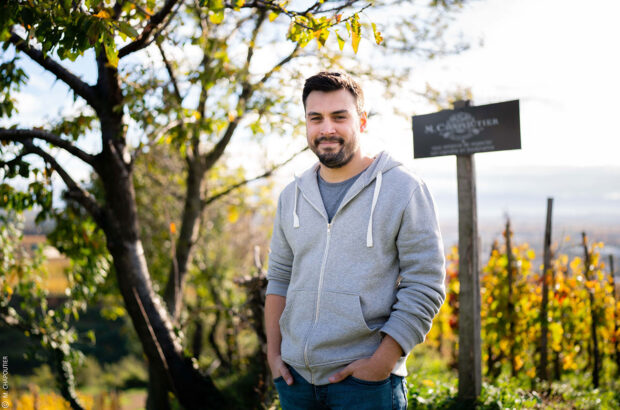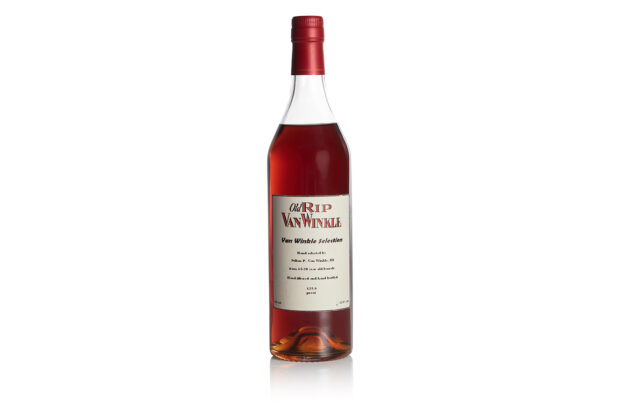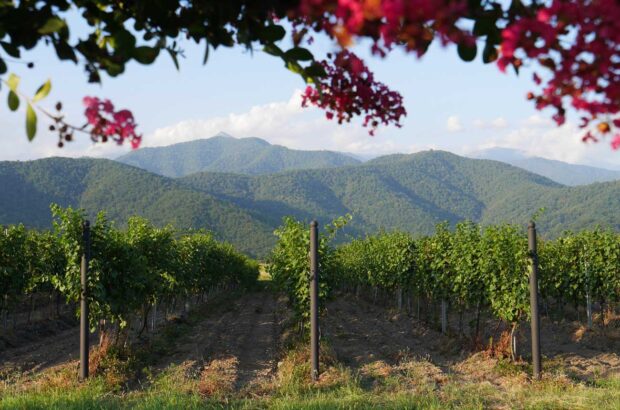The dream: combining the best Old and New World practices to make terroir-driven wines from New Zealand’s first ‘grand cru’ vineyard site. Bob Campbell MW meets the force behind an ambitious vision.
Perspiring after climbing a steep hill on a Marlborough summer’s day, Dr Damian Martin stood on the crest and gazed at the valley below. Was it the exertion that made his heart beat faster or the excitement of looking at a unique, clearly defined 1,600ha (hectare) block of land that might one day produce the region’s finest wines?
It is an amazing sight: a single terrace 9km long and 2km wide covered with what Martin reckons are the oldest alluvial soils in Marlborough. The Waihopai River forms the eastern boundary with steep hills on the west, while the jagged edge of the northern boundary was formed by a fault line that runs all the way across Cook Strait to Wellington. Martin focused on the fault line and smiled; it had protected the terrace from erosion. That it was intact was something of a miracle. Martin felt the same sort of thrill as a palaeontologist who’d found an unknown forest that may be inhabited by prehistoric animals.
Fossils never interested Martin. Terroir did – he earned a doctorate in viticultural science from Bordeaux University and while there ‘studied terroir to death’. He was part of an Appellation d’Origine Contrôlée (AC) tasting panel in the southern Rhône, and was well acquainted with the regulatory side of the AC system. He knew regulations enshrined ‘best or traditional practice’ methods in France’s superior wine regions. He understood the challenges involved in identifying a superior spot then controlling viticultural and winemaking methods to maintain a high level of quality and produce wines that expressed a sense of terroir.
But no system is perfect. In France, the boundaries of an AC are often political rather than physical, resulting in significant differences in growing conditions across a district marketing its wines under a common banner. Winemaking differences and, to a lesser extent, differences in viticultural practice can mask terroir, although the AC system does allow a uniformity of viticultural practice – a level playing field that encourages the expression of terroir. Contrast the AC system with the New World system or, in the case of New Zealand, the lack of a system. Winemakers have total freedom to grow any grape variety, cropat any level, apply any level of irrigation and choose from a large variety of weapons in their winemaking armoury.
Under those conditions the influence of terroir becomes very blurred, if it is discernible at all. Martin imagined the 1,600ha plateau planted with a limited number of suitable varieties using best viticultural practices. It would be high-quality winemaking on a grand scale, with wines reflecting the terroir of a unique area about the size of Margaux. As he contemplated the land below he had a vision of being able to do a contemporary spin on the old AC system by leaving the regulatory baggage behind. He could fuse the best of a New World approach with Old World tradition by establishing consistent, quality-focused viticultural techniques. Wine made from anywhere on the plateau would have a strong sense of place. If the wine was as good, distinctive and consistent as Martin hoped, it would enhance the reputation of Marlborough. If its winemakers ever chose to identify superior sites, this must surely be a hot contender.
Making it happen
At that time Martin was chief viticulturist for Corbans, the country’s second largest producer. He’d been given the task of investigating just how the company could secure its future grape supply. The 1,600ha block of premium vineyard land seemed the obvious solution. He urged the company’s owners to buy the land – part of a much larger block, with the surrounding hills unsuited to grape growing.
But the purchase was too ambitious for a company in the throes of being sold to New Zealand’s largest producer, Montana (now Pernod Ricard NZ). Martin’s request was declined and the land sold to Auckland land developer Greg Olliver in 2000. Three months later Olliver left Martin a phone message suggesting they meet. When they did, Olliver revealed he now owned the land and had heard of Martin’s proposal to develop a large single-vineyard designate. Martin told him why he thought the land was special and how he’d hoped to build its reputation as a premium wine district.
After 30 minutes Olliver said, ‘So, instead of churning out one big, mid-market brand you want to make some wine yourself and let other reputable producers make highquality wines from the same site. Instead of making one Montana-type label, you want to make a lot of Coleraines. Let’s do it.’ With Jean-Charles van Hove, another Bordeaux-trained viticulturist, Martin set to work.
In 2001, van Hove established a grapevine nursery that would eventually supply seven million plants – enough to cover 1,600ha in narrow rows. Soil profiles were carefully mapped to help match each grape variety with optimum growing conditions. The new company was christened Winegrowers of Ara. The reason? To the Maori people of New Zealand, Ara means ‘pathway’, while to the Romans it signified a ‘shrine’. ‘For us as winegrowers,’ says the company literature, ‘Ara is a place where New and Old Worlds intertwine – a true fusion of tradition and innovation, a unique geological feature within Marlborough destined to become a new origin for wine.
‘Ara is a focal point, a place where the essential elements of land, climate, nature and people converge into a clear pathway towards great wine. Marlborough’s cool Waihopai Valley has a relatively high frost risk. That’s not a problem if you manage it correctly,’ says Martin. Several large dams were built to supply overhead sprinklers that would saturate the vineyard when frost struck. This is one of the most effective frost protection measures: it can save a crop in temperatures as low as -60°C and is more reliable than helicopters or wind machines which rely on the presence of an inversion layer of warmer air. Water is pumped by four huge 600hp (horsepower) Caterpillar diesel engines housed in a pump station that’s straight out of a James Bond set. Drip irrigation is regarded as de rigueur by Marlborough grape growers but Martin has flouted convention by not installing it.
Irrigation dilutes terroir, he believes. Non-irrigated vines send their roots down deeper into the soil, giving the vine access to more minerals and providing greater consistency from vintage to vintage. It is also a more natural and sustainable process if the vines can extract water and nutrients from the soil reserves. Most of Marlborough’s vineyards are planted on youthful alluvial soils while Ara has the valley’s oldest alluvial soils dating back to the last glacier period. The surface soils are weathered and less fertile with a deposit of fine material at a metre deep. Martin pointed to a cutting where the road had exposed a bank about two metres high. A strip of grass made a line along the bank at a metre deep – the most water rich layer. Ara soils have an unusually high clay content providing extra water-holding capacity.
Rain maker
To help young vines become established in often arid growing conditions, Martin gives them a monthly drenching during the dry season.
‘We’re simulating periodic rainfall rather than providing a regular supply via drip irrigation,’ he said. ‘I want to keep the vines growing but encourage them to send roots deep in search of nutrients and water. There is empirical evidence that wine made from irrigated vines tastes different to that from nonirrigated vines. Irrigation is like background noise – it blurs the fundamental influences of soil and climate. In the New World, characters in wine described as being derived from terroir are often simply derived from soil management through applied water and nutrients.’
The first small harvest of grapes was made in 2005, producing Pinot Noir of sufficient quality to be bottled under the flagship label, Resolute. In 2006 came a Sauvignon Blanc and Pinot Noir under the Composite label (a blend of many parts of the vineyard). By the 2007 vintage 380ha of vineyard had been planted, although not all the vines were bearing fruit. Craggy Range contracted to take grapes from a defined block and made a 2007 Ara Sauvignon Blanc. Martin hopes to attract interest from reputable wine producers from around the globe and is in discussion with ‘a number of interested parties’ but won’t be drawn further. To maintain a high standard for wines made by other wineries from Ara grapes, Martin plans to establish an independent tasting panel of experts. Each year the panel will taste every wine made from Ara grapes. Only those that reach a minimum standard will be allowed to use the Ara brand on their labels.
Craggy Range general manager Steve Smith MW, describes the Ara vineyard as ‘a helluva site’. He likes the idea of a tasting panel, though feels it will be controversial. Smith, a highly qualified viticulturist, is totally in tune with Martin’s viticultural style, particularly the narrow vine-spacing and choice of vine training, which is almost identical to his own. He’s more cautious about endorsing Martin’s decision not to use drip irrigation, suggesting that some of the grapes harvested in 2007 suffered water stress. That may, of course, be a teething problem that is solved with greater vine maturity. Martin believes he has already created New Zealand’s second largest single vineyard. His vision to develop New Zealand’s equivalent of a grand cru site in Marlborough is the most ambitious project the region has seen since vines were first planted there 35 years ago. When Montana pioneered viticulture in Marlborough many people thought it was crazy. Martin has his share of critics – neighboruing winemakers among them – but no one thinks he’s crazy.
Website: Winegrowers of Ara
Written by BOB CAMPBELL







